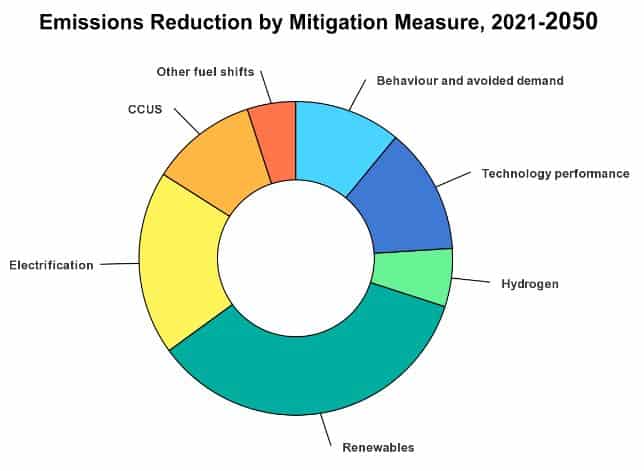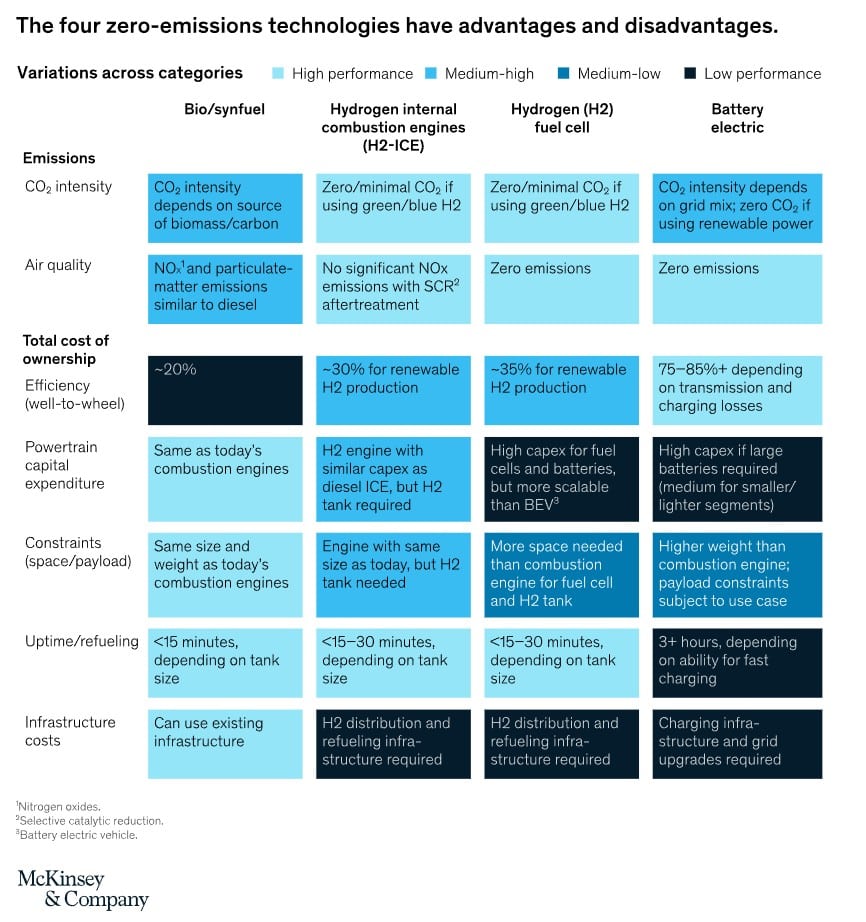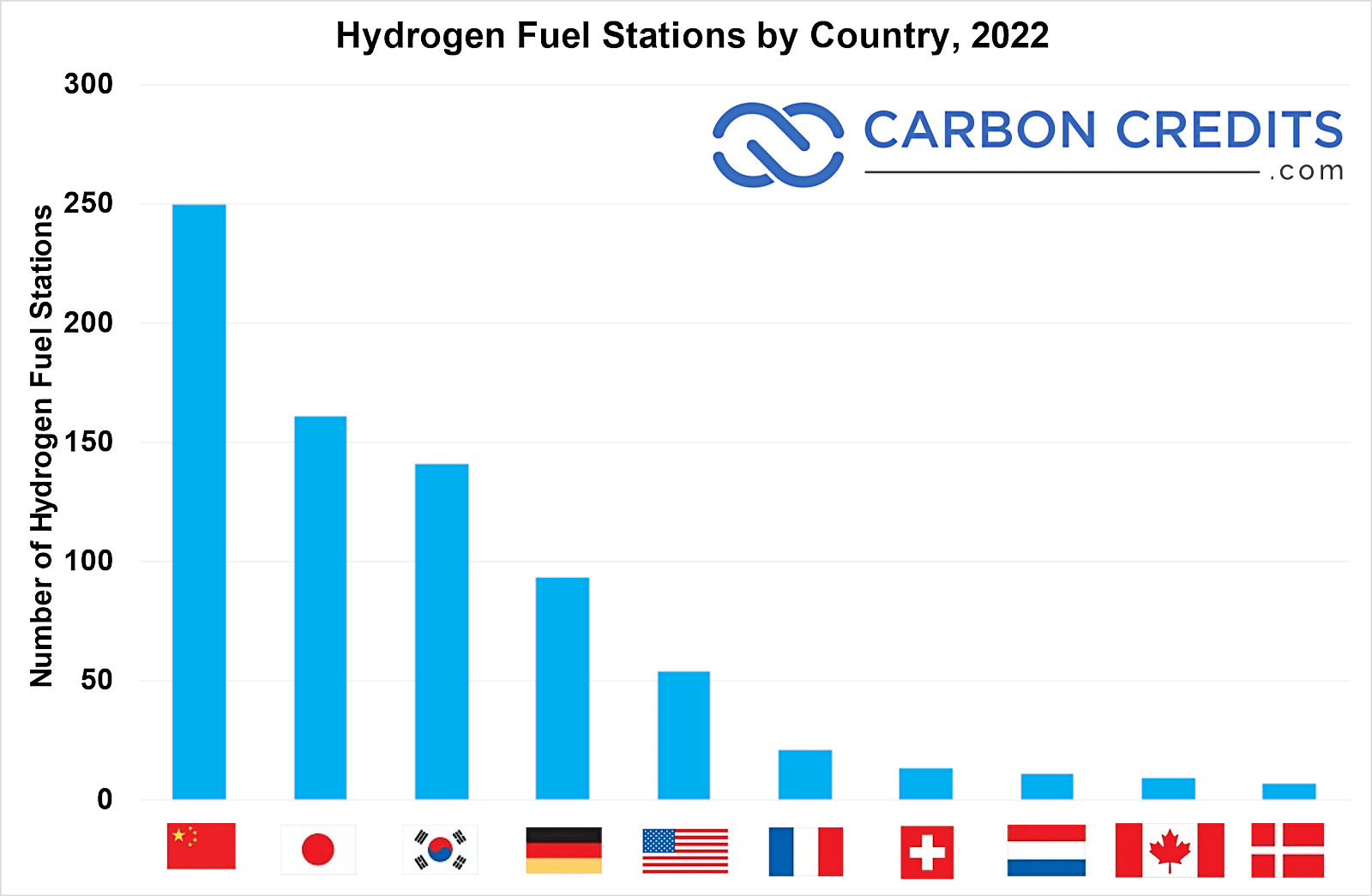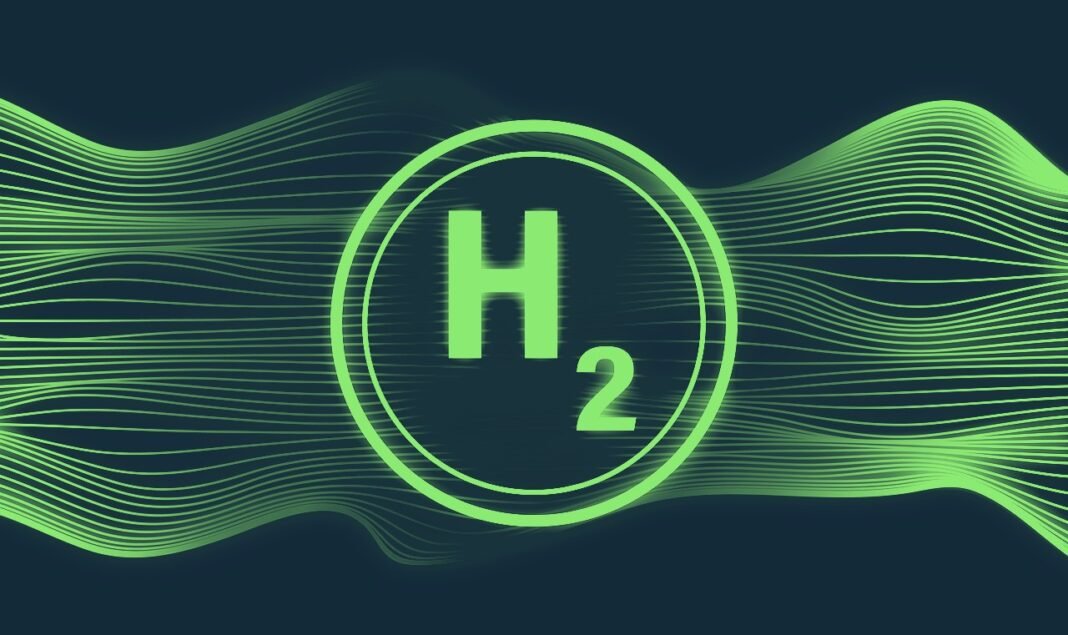These days, with the importance of furthering the fight against climate change, more and more different options are being explored. Making the transition to clean renewable energy is one of the centerpieces of our net zero future, and one of these potential sources is hydrogen energy.
The International Energy Agency (IEA) projects that from here out to 2050, hydrogen energy will play a small but noticeable role. It accounts for 6% of the cumulative emission reductions needed to hit our net zero targets by mid-century.

But what is hydrogen energy, exactly? And what does it do that other sources of clean energy can’t do right now?
Let’s start with the fundamentals of hydrogen energy: how does it work?
Hydrogen Fuel: The Basics
The first thing to know about hydrogen energy is that hydrogen is a fuel.
What that means is that like other fuels, such as coal or natural gas, we can burn it to create energy.
- However, when burned in a fuel cell, the only emission from hydrogen energy is water.
Unlike fossil fuels that emit greenhouse gasses, hydrogen fuel can burn 100% clean – or mostly clean, depending on how it’s done.
In a hydrogen fuel cell EV or FCEV, hydrogen is burned with pure oxygen in specially made cells to create water.

HICEVs are actually very similar to our current, commonly used gas-powered vehicles. Indeed, many HICEV prototypes have simply been modified versions of previously existing vehicles, as shown below:

However, since air contains nitrogen, the byproducts from burning hydrogen in an HICEV include nitrogen oxide (NOx) alongside water. And while NOx isn’t a greenhouse gas, it’s an air pollutant that contributes to smog.
And while traditional gas-powered vehicles produce significantly greater amounts of NOx, the fact that HICEVs produce some as well means that they’re not true zero-emissions vehicles – even if this can be mitigated with catalytic converters much like in a regular car.
- Even with that taken into consideration, however, both FCEVs and HICEVs produce zero carbon emissions, which are the main focus of our net zero transition.
As a result, hydrogen is being considered for use in vehicles as a replacement for traditional gas-powered internal combustion engines, alongside electric vehicles (EVs).
Why Hydrogen Fuel?
Now, you’re probably thinking – EVs are everywhere, and chances are pretty good that your local dealership has several on their showroom floor, whether they’re plug-in hybrids or fully electric battery EVs.
But if you’re reading this article, there’s a good chance you’ve never even heard of hydrogen-powered cars. Much less be able to drive one off a lot yourself (unless you happen to live in China, Japan, South Korea, or Germany).
Haven’t EVs already established themselves as the dominant replacement option for gas-powered cars? What could hydrogen bring to the table that EVs can’t offer?
Here are some of the major advantages and disadvantages of FCEVs and HICEVs (referred to as H2-ICEs in this table) vs. traditional EVs, as well as a fourth option: biogas/synthetic fuel:

One thing not mentioned in the table above is that hydrogen vehicles generally have the same range as their traditional gas-powered counterparts. In contrast, battery EV owners must shell out the big bucks if they want their vehicle to have a range competitive with that of a regular car.
These longer-range EV batteries would weigh more, in turn causing the vehicles to use more energy. Hydrogen fuel’s energy density is significantly higher than that of batteries. As such, a hydrogen vehicle of equivalent range would weigh much less than the battery EV equivalent.
A longer-range battery EV also directly translates to a longer charging time. In contrast, refilling a hydrogen vehicle is essentially identical to how you fill up your car at a gas station.
In summary, hydrogen vehicles, and HICEVs in particular, offer a number of competitive advantages over battery EVs. But they do have their own disadvantages too. Hydrogen fuel is more difficult to store than electricity, for instance.
The main barrier to mass adoption for both EVs and hydrogen vehicles is that they require extensive build-out of refueling infrastructure. But EVs do have an advantage in this regard as many battery EV owners can recharge their vehicles at home, even if the process is slow.
That’s why battery EVs are winning – at least for now.
How Do We Get Hydrogen Fuel?
That battery EVs can be charged at home is perhaps the biggest advantage battery EVs have over hydrogen vehicles right now. Electricity is all around us and part of our daily lives. Hydrogen fuel, however, would require production and distribution facilities just like how gas stations need to get their gas from refineries and bulk storage terminals.
Unlike oil, however, hydrogen doesn’t naturally form in large quantities on Earth. There aren’t any hydrogen formations we can drill down into to start producing from. Instead, hydrogen fuel needs to be produced through manmade processes.
There are two main methods of hydrogen production: from natural gas, and from water.
The former is known as blue hydrogen. This type of production usually combines methane from natural gas with high-temperature, high-pressure steam to form hydrogen and carbon monoxide. This process is known as steam methane reformation.
Currently, this is how the world gets most of its hydrogen. However, since methane contains carbon, inevitably we end up with carbon emissions. That would mean we need some method of capturing and storing the carbon emissions to make this hydrogen a clean energy.
However, hydrogen can also be produced from the electrolysis of water, which is known as green hydrogen.
It’s rather aptly named, as the process uses electricity to split water into hydrogen and oxygen, thus creating zero harmful emissions – it’s as green as it gets.
Now obviously, between the two it’s clear that green hydrogen is the preferred method of production.
The problem, unfortunately, is that green hydrogen is the newer tech of the two. It still needs to solve a major issue before it can take over blue hydrogen’s role as the world’s primary source of hydrogen.
Producing green hydrogen is extremely power-intensive, even much more expensive than blue hydrogen – a bit over 3x. That’s why lowering the cost of green hydrogen is one of the main focuses in the hydrogen industry right now.
In fact, back in June 2021, the U.S. Department of Energy launched its “Hydrogen Shot” program. It aims to reduce the cost of green hydrogen by 80% by the end of the decade.

This puts the cost of green hydrogen production at $1 per kilogram, which would be below even blue hydrogen’s average cost of around $1.50 per kilogram.
Of course, this is an ambitious goal, and it’s uncertain if getting to $1/kg by 2030 is feasible. But any advancements in green hydrogen tech will significantly benefit the adoption of hydrogen energy as a whole. Unsurprisingly, there’s a lot of work going on in this field.
Hydrogen and Carbon Credits
While it’s still early days for the hydrogen energy industry, there are already clear use cases – and clear synergies.
Carbon credits are one of those synergies that perfectly go hand-in-hand with hydrogen fuel. Hydrogen fuel is primarily being advocated for use in vehicles. So, you can look at the electric vehicle industry to see how things work out.
Major EV maker Tesla, for instance, has generated around a billion and a half dollars each year since 2020 from carbon credits resulting from the sales of their vehicles.
It seems logical, then, to expect that hydrogen fuel vehicle makers would benefit the same way as battery EV companies.
On top of this, green hydrogen production would be another potential avenue for carbon credits.
Hydrogen is actually used in many industrial processes, including making fertilizers, refining oil, and manufacturing steel:

As development continues on transitioning hydrogen consumption towards net zero, whether through the addition of carbon capture and sequestration to blue hydrogen production or further technological advances in green hydrogen production, you can be sure that carbon credits will have a role to play.
The Future of Hydrogen in a Net Zero World
Right now, the hydrogen energy sector is still in its nascent early stages of growth.
- Cheap, clean hydrogen production remains one of the primary obstacles the industry must contend with before hydrogen energy can really start seeing widespread adoption.
Luckily, hydrogen is highly in demand in a number of other industries as well. So there’s plenty of incentive behind cleaning up blue hydrogen or lowering the cost of green hydrogen.
In fact, Mckinsey & Company estimated that the total hydrogen production capacity announced by companies by 2030 increased by over 40% to 38 metric tons per annum. This capacity is about half the volume necessary to be on track to net zero (75 Mt p.a.).


Back in 2021, Swedish steelmaker SSAB built a pilot plant to produce the world’s first fossil fuel-free steel. The facility is using green hydrogen in place of coking coal in the iron ore reduction process.
The company is still in the process of transitioning its steel production. They expect to be able to go fossil-free on most of their steel production by 2030. BUT they’ll need more hydrogen to do it.
-
Hydrogen vehicles also have competition in the form of battery EVs. They also face the same challenges of requiring the extensive build-out of a distribution and refueling network.
But when it comes to vehicles, there’s one niche hydrogen fuel has where battery EVs have a harder time competing. That niche is heavy industry and long-distance transport. The superior energy density of hydrogen fuel makes it a more attractive solution for this segment.
For instance, trucks that need to drive very long distances with heavy loads and intermittent access to charging – such as many truck routes through the interior of North America – would find hydrogen fuel a perfect fit for their needs.
Some vehicle manufacturers are even hedging their bets by making hybrid hydrogen fuel battery vehicles. They’re much like plug-in hybrid EVs except with hydrogen fuel instead of gas.
Of course, hydrogen refueling infrastructure is still sorely lacking and lagging behind battery charging infrastructure. Unless you live in one of a few countries that made hydrogen energy a central part of their energy transition:

- The IEA’s net zero forecast calls for hydrogen usage to grow sixfold by 2050 to account for 10% of total final energy consumption, all supplied from low-carbon sources.
As of last year, over 30 countries have developed, or started to prepare, national hydrogen strategies, joining France, Japan, and South Korea – the first three countries to do so.
It may still be early, but you can expect lots of development and advancements in the hydrogen energy field in the years to come as governments and corporations alike further work hydrogen into their clean energy transition plans.

